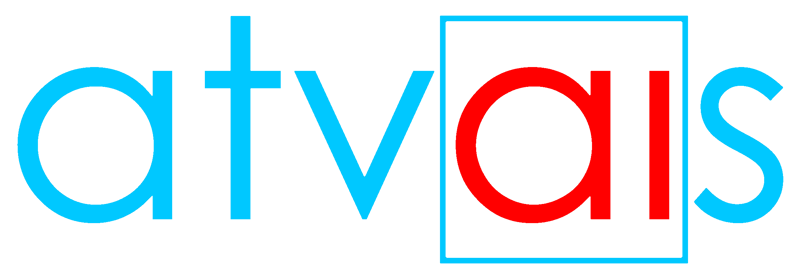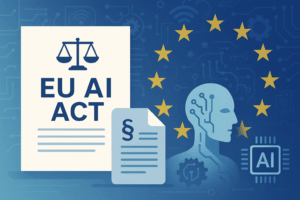The rapid adoption of artificial intelligence tools in the workplace has brought unprecedented efficiency, but it has also introduced new challenges. While many organizations are investing in AI governance, there is a growing risk that remains under the radar: Shadow AI. This term refers to the unsanctioned use of AI tools by employees, often without the awareness of IT, legal, or compliance departments.
Shadow AI may seem harmless at first—an employee uses ChatGPT to draft an email or summarize a report—but the implications are serious. From data protection risks to non-compliance with internal policies and emerging laws such as the EU AI Act, the ungoverned use of AI can lead to significant consequences. This article explores what Shadow AI is, the risks it poses, how to detect it, and what governance practices organizations should implement in response.
What Is Shadow AI and Why It Matters
Shadow AI is not a formal category of tools but a phenomenon of usage. It encompasses any AI system used in the workplace without prior approval, proper vetting, or integration into existing governance structures. This includes free versions of generative AI platforms like ChatGPT, image generation tools, or AI-powered automation scripts used in spreadsheets or data processing.
The appeal of these tools is obvious: they are fast, powerful, and require no procurement process. But precisely because of their ease of access, they can be used to process sensitive data, generate misleading outputs, or introduce ethical concerns—all without any audit trail. This poses significant challenges to organizations aiming to comply with data protection laws, ensure trustworthy AI use, and maintain internal accountability.
In many cases, employees do not intend to violate rules or policies. Rather, they see AI as a helpful assistant in their workload. However, the absence of oversight means that even well-intentioned use can have damaging outcomes, particularly in regulated environments.
Legal and Regulatory Risks of Uncontrolled AI Use
The use of AI tools without proper safeguards and approvals can expose organizations to a wide range of compliance risks. Under the General Data Protection Regulation (GDPR), for example, personal data must be processed lawfully, transparently, and for specific purposes. Shadow AI often involves entering personal or even sensitive data into external systems that do not offer appropriate guarantees under Article 28 (processor agreements) or Article 32 (security of processing).
Moreover, the EU AI Act introduces a layered risk-based approach to AI systems. Tools that fall into the “high-risk” category—such as those used in employment, credit scoring, or biometric identification—must meet extensive conformity, documentation, and human oversight requirements. Shadow AI systems will inevitably bypass these obligations, creating both legal exposure and reputational risk.
Even in jurisdictions without comprehensive AI legislation, existing sectoral rules and ethical principles require oversight of automated decision-making. In short, Shadow AI creates blind spots in governance, making organizations vulnerable to regulatory scrutiny, audits, or enforcement.
Recognizing the Signs of Shadow AI Use
Organizations cannot govern what they cannot see. A first step is to assess whether and how employees are using AI tools outside sanctioned channels. This does not mean intrusive surveillance, but rather deploying structured methods to build visibility. Common indicators include:
- Unexplained changes in content style or productivity that suggest AI assistance
- Network logs showing access to AI domains or platforms
- Survey responses indicating unofficial tool use for tasks like translation, writing, or analysis
In some cases, employees may use AI tools on personal devices or through browser extensions, making detection more difficult. Open communication, internal education, and proactive engagement with teams are often more effective than purely technical controls. Framing the conversation around safety and trust—rather than restriction—can also encourage self-reporting and dialogue.
Establishing Governance Frameworks for AI Use
Once Shadow AI is acknowledged, the next step is to establish a governance framework that brings existing and future use under control. The aim is not to eliminate AI use but to align it with organizational risk tolerance, security standards, and compliance obligations.
At a minimum, governance should include the following actions:
- Define an internal policy that clearly distinguishes between approved and unapproved AI tools, setting expectations for employees.
- Maintain an internal register of authorized AI tools that have been vetted for security, legal, and ethical risks.
- Offer practical guidance on acceptable inputs (e.g., never enter personal or confidential data into unvetted AI systems).
- Embed AI use assessments into procurement, onboarding, and vendor management processes.
The process should also be agile. As tools evolve, the governance framework should be reviewed and adapted accordingly. Establishing a cross-functional AI governance committee—drawing from IT, legal, compliance, HR, and operations—can help maintain relevance and coherence across departments.
Cultural and Ethical Considerations
Governance is not only technical or legal—it is also cultural. Organizations that adopt a punitive or overly rigid approach may drive AI use further underground. Instead, creating an environment where employees feel safe to ask questions or report concerns encourages openness and accountability.
Providing approved alternatives also reduces reliance on Shadow AI. When employees have access to well-integrated, compliant AI tools, they are less likely to turn to unapproved systems. Equally important is the provision of AI literacy training. Employees must understand not only how AI works, but also the ethical and legal implications of using it in professional contexts.
Integration into Broader Risk and Compliance Structures
Shadow AI governance should not be an isolated initiative. It must be integrated into existing organizational systems such as data protection programs, information security controls, and enterprise risk management. Regular audits, documentation of AI usage, and internal reviews can ensure alignment with both internal policies and external regulatory developments.
Moreover, organizations should be prepared to respond to inquiries or incidents. If a data breach occurs due to the use of an unauthorized AI tool, the organization must demonstrate that it had measures in place to prevent or detect such behavior. Documentation, training records, and clear escalation procedures all contribute to defensibility in such cases.
Two Core Priorities for Managing Shadow AI
In summary, two strategic priorities should guide organizations in addressing Shadow AI:
- Visibility and guidance: Gain insight into where Shadow AI use is occurring, and provide clear, accessible policies and tools that allow employees to work effectively without bypassing governance.
- Culture and accountability: Promote a culture of responsible AI use through training, communication, and leadership engagement, while embedding AI governance into existing compliance structures.
Conclusion
Shadow AI is not a fringe issue—it is already present in most modern workplaces. While its risks are real, they can be managed with a combination of visibility, policy, education, and cultural change. Organizations that acknowledge and address Shadow AI early will be better positioned to use AI productively and responsibly.
Effective governance does not stifle innovation. On the contrary, it enables organizations to adopt AI in ways that are lawful, ethical, and aligned with business objectives. Recognizing Shadow AI as a governance challenge—and not just a technical anomaly—is essential for any organization aiming to lead responsibly in the age of artificial intelligence.






